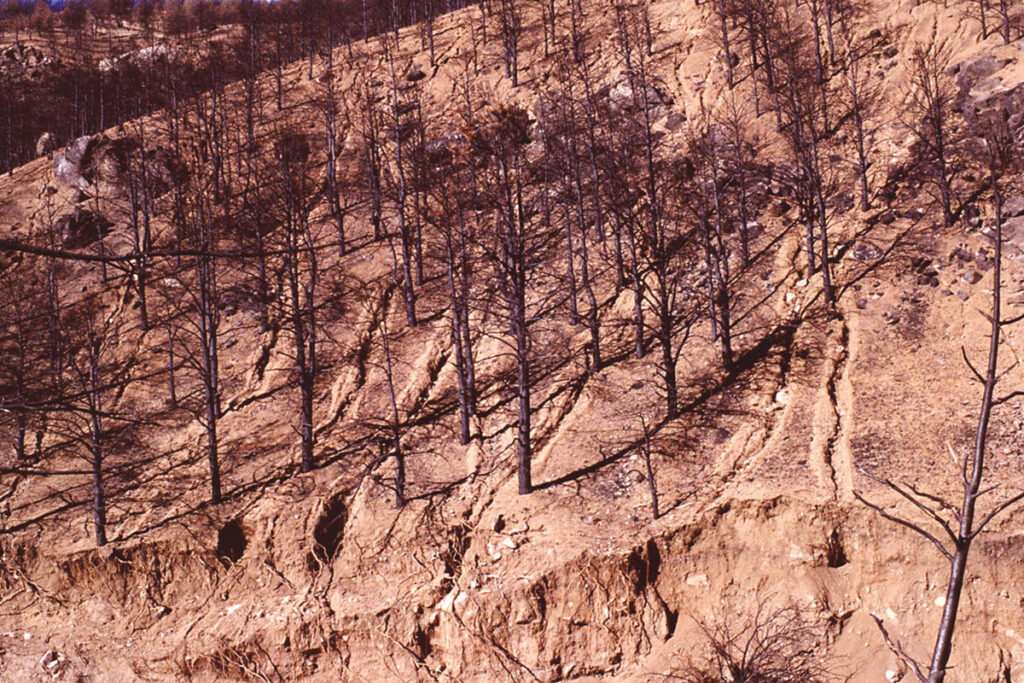This article was originally published by City Journal.
It’s not a question of if the dense forests south of Bozeman, Montana, will burn, but when. After multiple studies warned that ash and sediment from a fire could knock out the booming mountain city’s water-treatment facility, local officials worked with the U.S. Forest Service to craft a plan that would thin trees and conduct prescribed burns to protect the watershed from a catastrophic fire. “The Forest Service and the city feel it is responsible management to begin these preventative reduction actions now,” officials said at the time.
That was 16 years ago. This summer, after regulatory delays and litigation from environmental groups, the project finally got underway. It couldn’t happen soon enough. As wildfires have raged across the western United States this year, forest-restoration projects like this are proving critical to reducing the risk of devastating wildfires—that is, as long as red tape and litigation don’t keep such projects from getting off the ground.
Consider another restoration project, proposed in 2010 in nearby Lincoln, Montana. After six years of environmental analysis and procedural delays, the project won approval in 2016 but was later halted when environmental groups sued, claiming thinning trees and clearing underbrush would degrade wildlife habitat. In 2017, while the restoration work was stalled, much of the habitat was destroyed when the area burned in a large wildfire—the very outcome that the project was designed to avoid.
Fire scientists are coming to accept the need for forest restoration, including selective thinning and controlled burning to reduce the risk of catastrophic wildfires. The reason is simple: removing excess fuels prevents fires from reaching the canopy, where it can spread through the treetops in dense forests, and instead keeps fires on the ground, where they are less destructive and easier to fight.
Examples abound from this year’s fire season. In Oregon, flames from the massive Bootleg Fire slowed in areas where vegetation was previously removed through selective thinning and controlled burns, allowing firefighters to suppress the blaze. In California, restoration work near South Lake Tahoe helped curb the Caldor Fire’s rapid growth by reducing flame heights from 150 feet to 15 feet, and crews saved hundreds of homes. And in Sequoia National Park, where fires raged last month, an active prescribed-burning program protected many of the park’s iconic trees.
Yet despite evidence of their effectiveness, such management actions are not the norm. According to the Forest Service, 63 million acres of national forests are at high risk of extreme wildfires. Yet the agency implements just a few million acres of fuel-reduction projects each year. At that rate, it would take decades to address the nation’s forest-restoration backlog—while the problem would continue to worsen.
Cutting red tape could increase the pace and scale of forest restoration. To start, Congress could free more restoration projects from the burdensome environmental-review requirements that delay or derail much-needed management. Much of the restoration work that saved South Lake Tahoe was facilitated by provisions Congress authorized for the region in 2009 that exempted restoration projects of up to 5,000 acres from lengthy environmental analysis. Such exemptions, known as “categorical exclusions,” could be expanded for restoration projects elsewhere.
The Forest Service could also do more to partner with communities on collaborative restoration projects. Federal contracting rules, however, often prohibit the agency from entering into long-term contracts and cooperative agreements needed to motivate large-scale restoration work. If potential partners are unsure whether a project will move forward, they are unlikely to devote resources developing collaborative proposals or building infrastructure to process small-diameter trees. Such fears are not unfounded. Last month, the Forest Service abruptly canceled a restoration project in Arizona that would have thinned hundreds of thousands of fire-prone acres, leaving local communities and timber-industry partners high and dry.
After this year’s devastating wildfire season, the Biden administration says it wants to double, at least, the amount of forest restoration it carries out each year. But fixing America’s forests will take more than just spending billions of dollars, as the administration has proposed. It will require cutting the red tape that can hinder restoration projects—or delay them until it’s too late.




